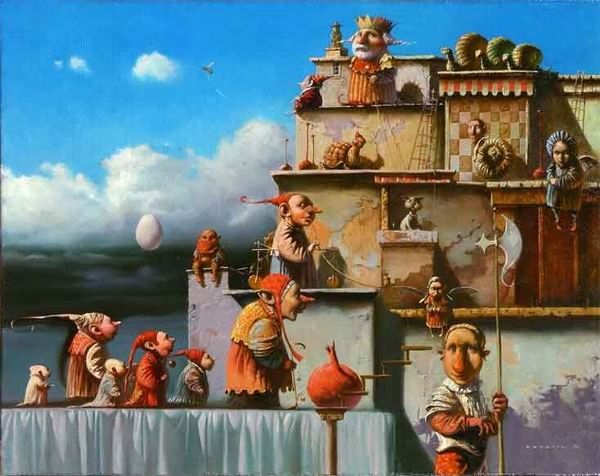
ONLY CONNECT...
How your chessmen connect and relationships they get into during a game of chess determines how you act and ultimately how successful you are at the chessboard. Your ability to "read," design, maintain and change favorably this Structure the interconnected men Form, is the ultimate chess skill. The name of the game really consists in knowing how to strengthen the Structure/Form, or as we usually say - to improve position (position = a particular way in which your chessmen are arranged/connected).
When you play a game of chess it is like designing something or constructing a mechanism of some kind by which you win or lose (Marcel Duchamp).
Recently I picked to read Howards End. For those who have not read it, it is a book by the British author E. M. Forster. It is about human connection.
The book's epigraph reads, ONLY CONNECT...
This immediately aroused my curiosity as I had been advocating, for ten years now, that the concept of Force that pieces exert and Piece Connections and interactions (how chessmen "exchange fire") should be the first thing we are to teach the beginner at Chess Square One on Day One. Even before any rules and details including how pieces make movements. That sounds weird, ah?
ONLY CONNECT...
Only two words. But how many pregnant meanings there are behind it!
For example, one of them might be the moral importance of connection between individuals, across the barriers of class, nation and race, something we all experience in the world we live these days. We sense that there is healing we need to do, within a nation (read, for example this blog by @erik), and globally, and it should be about connecting with those who have vastly different backgrounds and philosophies.
But it is not about this kind of social connections only. Everything is connected. This is how we live. We do not experience our world as a series of discreet visible component parts. And we should not experience the chessboard with chessmen arranged on it any differently. When we evaluate position to make a decision at the board, we should intuit the network of invisible relationships and create holistic meaning accordingly.
"It is up to us to perceive these intertwined threads and make meaning of them. Sometimes we do; sometimes we don’t. Regardless, independent of us, in the image [of a chess position, RP] they always simultaneously exist." Victoria Wyatt, Assoc Prof, University of Victoria.
Yet, in my niche of interest, that is Chess Square One, we have a myopic focus on the parts, the piece properties (how they move, what their relative value is, etc.), and no proper attention is given to connections and relationships, let alone wholes. As a result there is a big gap in understanding.

credit: unknown
How should we fix this gap in understanding? We, chess educators should start directing our efforts toward revealing this "web of life" right from Day One replacing an outdated, mechanistic, static perspective of the old traditional method presenting chessmen in isolation, with pieces perceived as distinct from each other.
In contrast, a new chess paradigm and worldview that I am proposing, should celebrate the opposite concept with Connections at its core!
There is a firm grounding in science, which has demonstrated that all systems (an organism, society, natural world, game of chess) are inextricably interconnected. If it is the case, then why don't we follow Forster's ONLY CONNECT... advice and teach Piece Relationships first thing?
"The adverb [of only connect...] lends the imperative a sense of urgency — this must be done — and also hope — if it is only this thing that must be done, then surely it can be done. The ellipsis can stand in for both what is to be connected and what will happen if the connection is made." Angela Chang, San Francisco State University.
The human cognition is hierarchical. And what these hierarchies are made up of?
Patterns.
Through patterns we are able to create and retain beauty - the patterns that connect.
This is the concept of 'information' the cybernetician Norbert Wiener saw as being a central part of our struggle to grasp the meaning.
Live in fragments no longer. Only connect, and the beast and the monk, robbed of the isolation that is life to either, will die (E.M.Forster, Howards End).
Any theory aspiring to interpret the existence, nature and meaning of things in general, or Chess Square One in particular can't do without Relations, without Patterns.
Let's finally connect the dots to link together related elements of Chess Square One in order to help the beginner find the "big picture", to sense the most important features of position. Or else the virus of board blindness will continue on to be raging within chess community and do most harm to the most vulnerable - the young, forming chess brain, the thinking mindset of beginner.
ONLY CONNECT...
.
.
.
.

